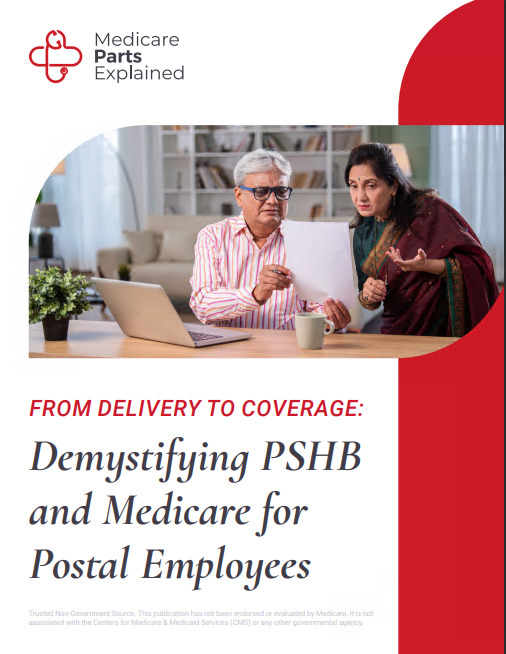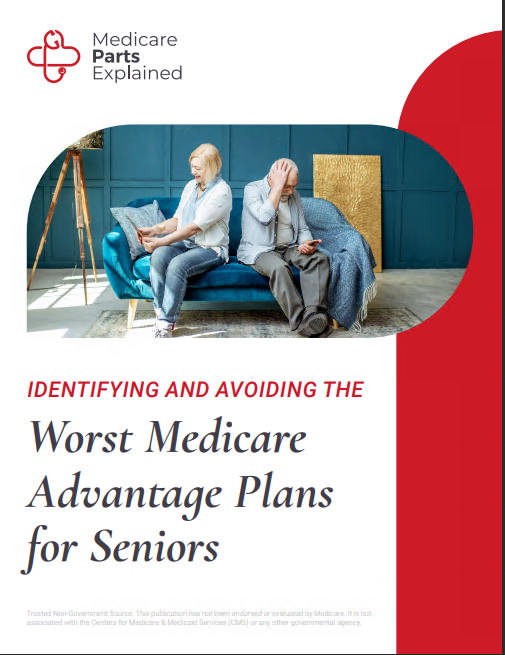Key Takeaways
-
Even with Medicare in place, you can still face significant ongoing costs that impact your financial stability in retirement.
-
Understanding what Medicare doesn’t fully cover in 2025 can help you prepare and protect your retirement income.
The False Sense of Financial Security
When you become eligible for Medicare, it often feels like a relief. You’ve paid into the system for decades, and now you expect it to act as a safety net for your healthcare needs. But that sense of security can be misleading. In reality, Medicare has limitations that could expose you to thousands of dollars in unexpected out-of-pocket costs each year.
The truth is that Medicare is not free and not all-inclusive. While it does help with many essential medical services, it doesn’t cover everything, and what it does cover often comes with cost-sharing requirements.
Understanding the Core Components of Medicare in 2025
To understand the financial risks you may face, it’s essential to first review what Medicare covers—and what it doesn’t.
Part A (Hospital Insurance)
-
Premiums: Free for most people who worked 40 quarters. If not, you could pay hundreds monthly.
-
Deductible: $1,676 per benefit period in 2025.
-
Coinsurance: After 60 days in the hospital, daily coinsurance charges apply.
-
Skilled Nursing Facility: Only partially covered, with coinsurance after day 20.
Part B (Medical Insurance)
-
Premium: $185 per month in 2025 (standard premium).
-
Deductible: $257 annually.
-
Coinsurance: You generally pay 20% for outpatient services after meeting your deductible.
Part D (Prescription Drug Coverage)
-
Deductible: Up to $590 in 2025.
-
Out-of-Pocket Cap: Newly capped at $2,000 in 2025, but this still means potential high costs.
These parts work together, but there are gaps in every direction. Hospital stays, outpatient care, prescriptions, and other types of treatment can still create major financial exposure.
The Out-of-Pocket Costs That Don’t Go Away
Even with all four parts of Medicare in place, you’re still responsible for many expenses that continue month after month, or emerge suddenly due to an illness or injury.
Copayments and Coinsurance
One of the largest overlooked expenses is the 20% coinsurance under Part B. This applies to:
-
Doctor visits
-
Specialist consultations
-
Diagnostic tests like MRIs and X-rays
-
Surgeries done on an outpatient basis
-
Durable medical equipment (walkers, oxygen, etc.)
Depending on your health condition, these costs can easily add up to thousands annually.
Prescription Drug Costs
Even with the new $2,000 annual cap introduced in 2025, not all prescriptions are covered equally. If you require specialty drugs, injectables, or medications not on your plan’s formulary, you may pay more.
And while the new prescription payment program allows you to spread costs throughout the year, you’re still responsible for them eventually.
Deductibles Stack Up
Each part of Medicare has its own deductible:
-
Part A: $1,676 per benefit period, which can happen multiple times in a year
-
Part B: $257 annually
-
Part D: Up to $590, depending on the plan
That’s a lot of upfront money before coverage even kicks in.
Hospital Stays and Rehabilitation
Medicare covers limited days in a hospital or skilled nursing facility. If you’re admitted for a long-term condition or multiple times a year, costs can balloon quickly.
After 60 days in the hospital or 20 days in a rehab facility, you begin paying daily coinsurance, which increases the longer you stay.
What Medicare Doesn’t Cover at All
Some of the most expensive care in retirement isn’t covered by Medicare at all. This includes services that many older adults eventually need.
Long-Term Care
Medicare does not cover custodial care in a nursing home or assistance with activities of daily living (bathing, dressing, eating). This is one of the most financially devastating costs in retirement, with average monthly rates exceeding several thousand dollars depending on location.
Dental, Vision, and Hearing
-
Dental care: Cleanings, fillings, dentures
-
Vision care: Eye exams, glasses, and contact lenses
-
Hearing services: Exams and hearing aids
None of these are included under Original Medicare. If you need any of them—which most retirees eventually do—you’ll be paying entirely out-of-pocket unless you have supplemental coverage.
Overseas Emergencies
Medicare generally doesn’t cover medical care you receive outside the U.S. If you travel internationally, you’re exposed to the full cost of care unless you purchase separate coverage.
Annual Increases: Why Budgeting Isn’t One-and-Done
One major financial challenge with Medicare is that costs increase every year. The 2025 numbers are already higher than those in 2024:
-
The Part B premium has increased from $174.70 in 2024 to $185 in 2025.
-
The Part D deductible has risen from $545 to $590.
-
The Part A inpatient deductible has gone up from $1,632 to $1,676.
While these may seem like modest jumps, they compound year after year. If you’re planning for 20 years in retirement, you must assume continued increases.
Additionally, your income can impact what you pay. High-income retirees pay more for both Part B and Part D premiums through Income-Related Monthly Adjustment Amounts (IRMAA).
The Hidden Impact on Fixed Incomes
Many retirees rely on a fixed income from Social Security, pensions, and savings. Rising Medicare costs directly eat into that income, especially when:
-
COLA increases don’t keep pace with Medicare premiums.
-
You have frequent outpatient care needs.
-
You rely on medications not fully covered by your Part D plan.
And because healthcare expenses often rise as you age, the pressure only intensifies over time.
Ways to Mitigate Financial Risk
While Medicare will always involve some out-of-pocket costs, you can take steps to reduce financial exposure.
Evaluate Medigap or Other Supplemental Options
A Medigap plan can help cover deductibles, copayments, and coinsurance. However, enrollment rules are strict, and pricing increases with age. It’s wise to review options early.
Enroll in Medicare on Time
Delays can result in lifelong late enrollment penalties:
-
Part B penalty: 10% added to your premium for every 12-month delay.
-
Part D penalty: 1% added per month of delay without creditable drug coverage.
These penalties are permanent and will eat into your monthly income.
Use Preventive Services
Medicare covers many preventive screenings and wellness visits at no cost to you. Taking advantage of these can help catch health issues early, avoiding more expensive treatment later.
Plan for Long-Term Care Separately
Because Medicare doesn’t cover long-term care, it’s essential to create a separate plan. Options may include:
-
Long-term care insurance (if obtained early enough)
-
Setting aside dedicated savings
-
Exploring state Medicaid eligibility in worst-case scenarios
Timing and Income Affect What You Pay
What you pay for Medicare depends on both when you enroll and how much income you have. In 2025, income from your 2023 tax return is used to calculate IRMAA surcharges. That means financial decisions you made two years ago are still affecting your current Medicare costs.
Also, note that Medicare Open Enrollment occurs annually from October 15 to December 7. This is your chance to review plans and make changes that affect the next calendar year.
If you’re new to Medicare, your Initial Enrollment Period starts three months before your 65th birthday and ends three months after. Missing it can lead to penalties and delayed coverage.
Making Smart Moves with the Right Help
Medicare is not one-size-fits-all. Plans, costs, and needs change. What worked for you at age 65 might not be suitable at 75. That’s why staying informed and reviewing your coverage each year is vital.
A licensed agent listed on this website can help you:
-
Understand your total cost exposure
-
Compare supplemental options based on your health needs
-
Review annual changes in premiums, deductibles, and coverage
-
Avoid penalties by making timely decisions
Medicare in 2025 Requires Ongoing Financial Awareness
Medicare continues to serve as a crucial part of your healthcare coverage in retirement, but it’s not foolproof. With rising costs, uncovered services, and potential penalties, it’s essential to stay proactive.
Don’t assume your initial enrollment decisions will protect you for life. Review your options annually, factor in future cost increases, and account for the gaps in coverage.
If you’re uncertain about how these ongoing Medicare costs could affect your financial plan, it’s a good time to get personalized help. Reach out to a licensed agent listed on this website to review your Medicare strategy for 2025 and beyond.












